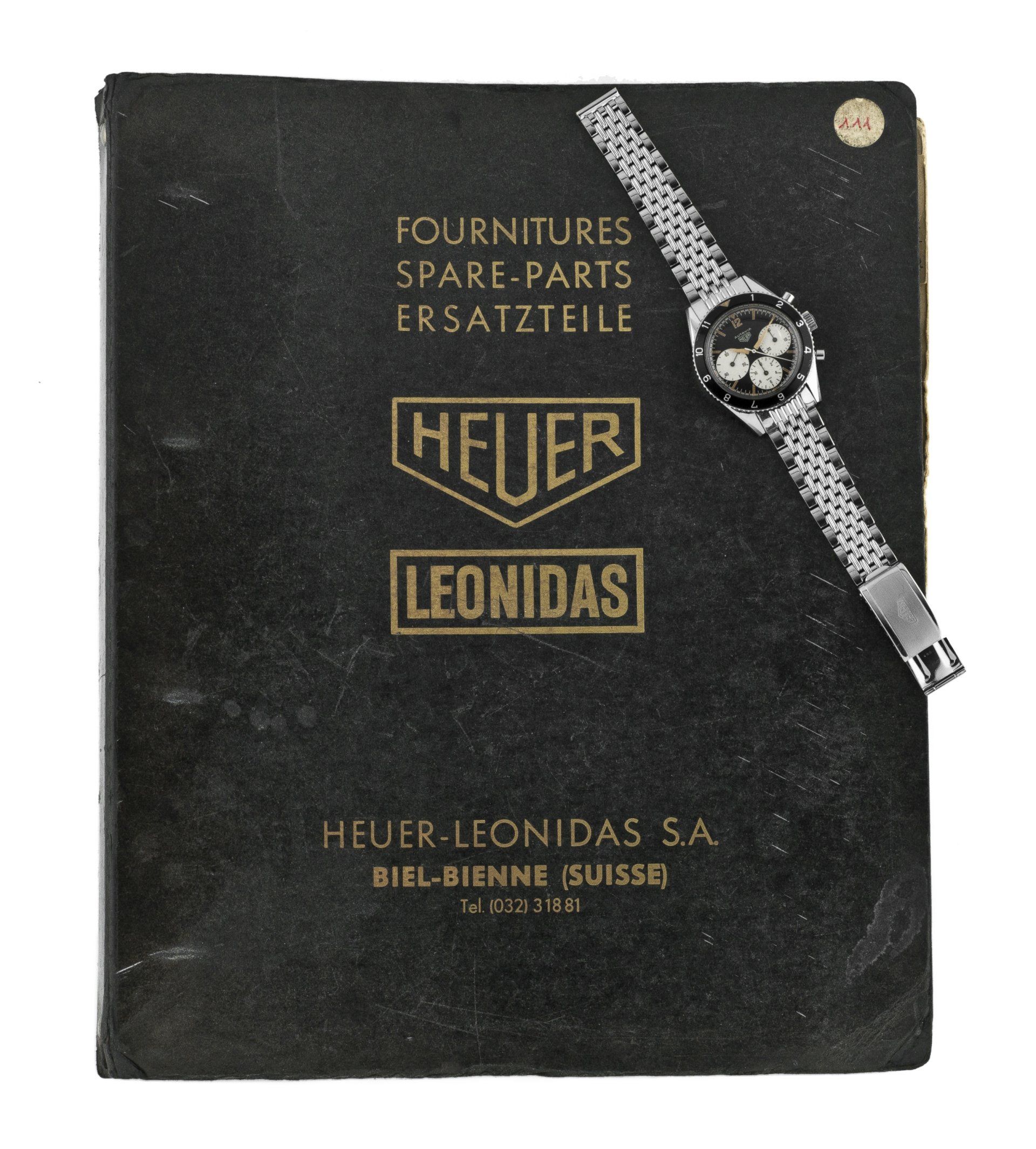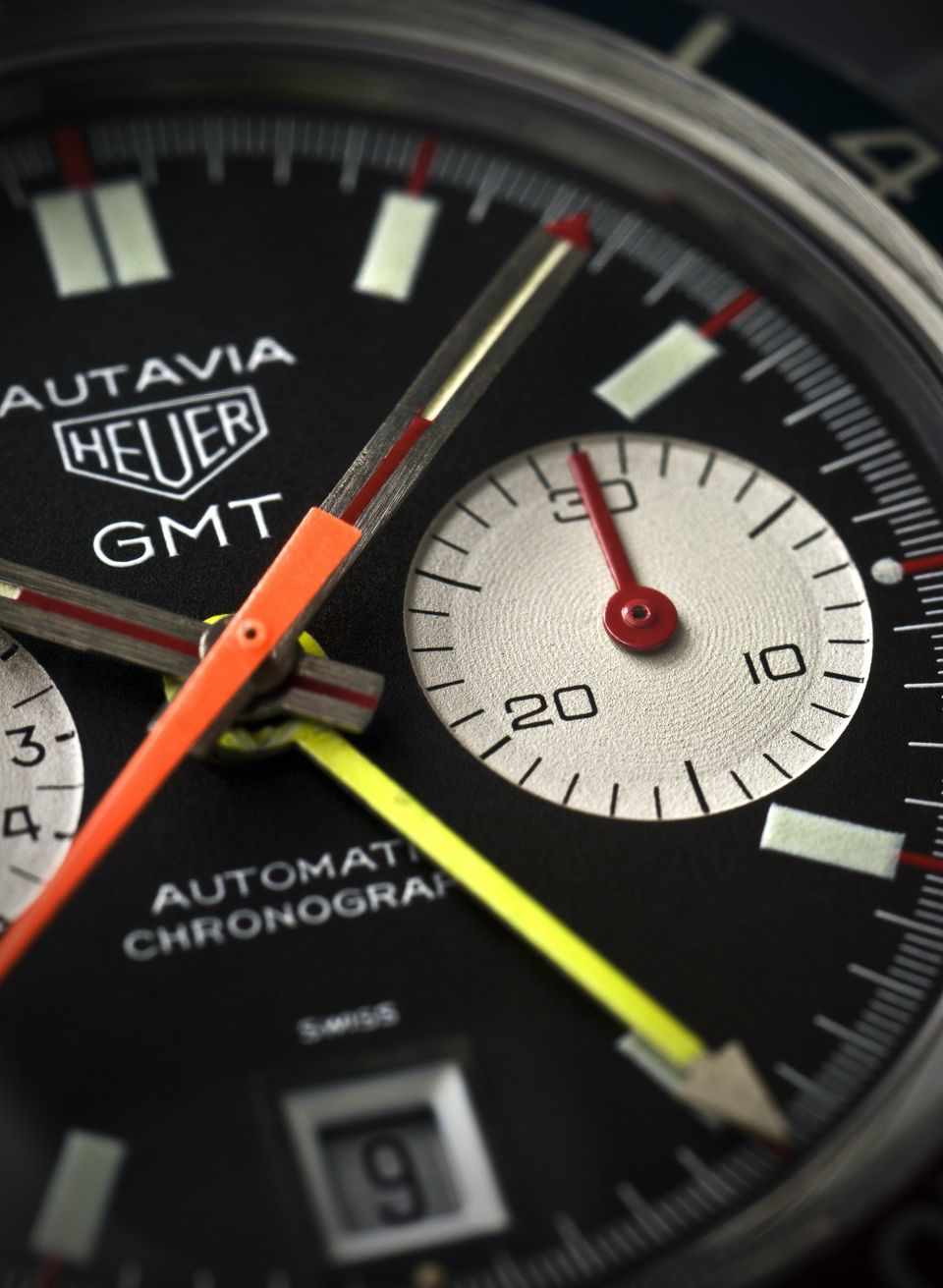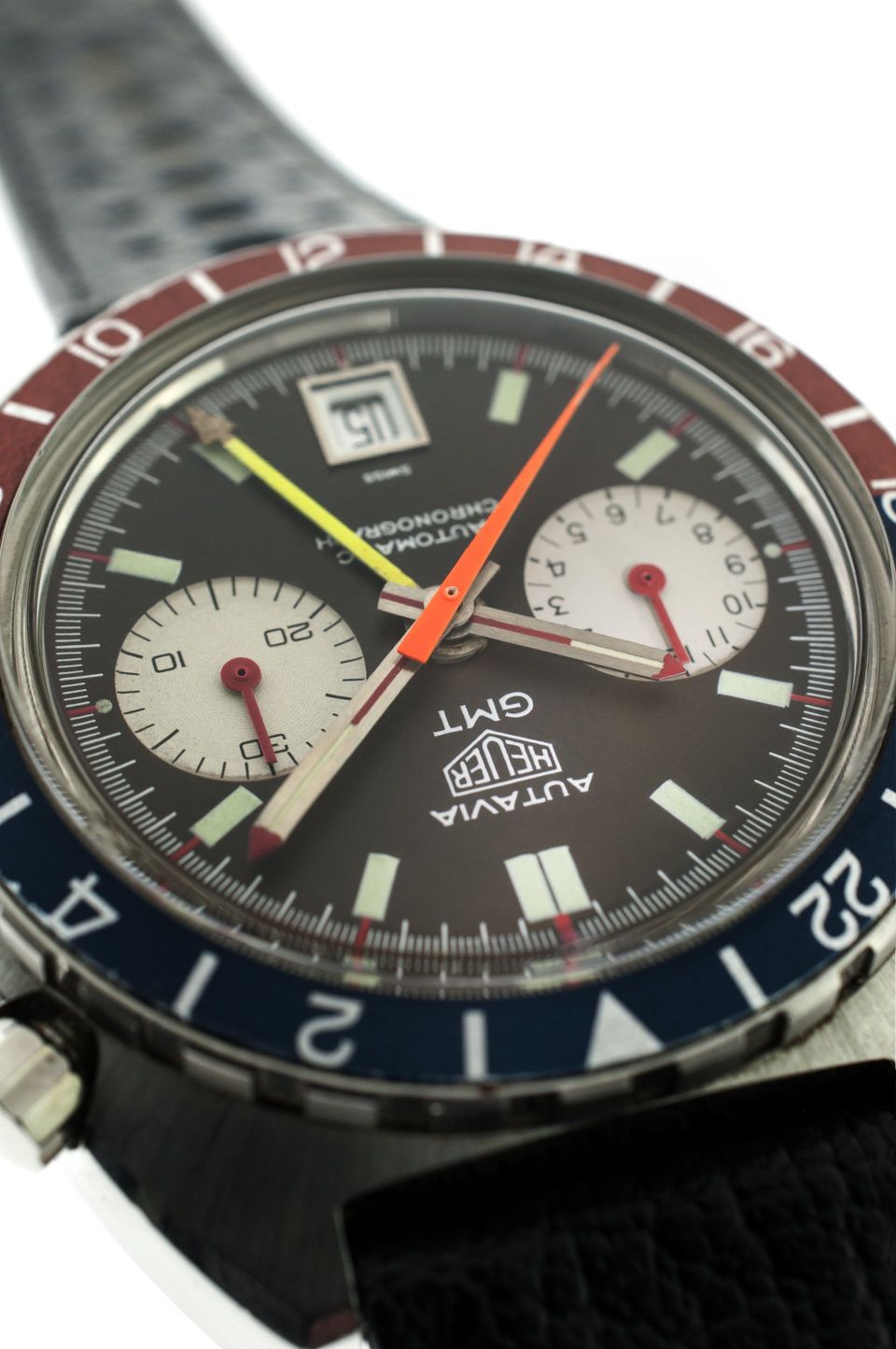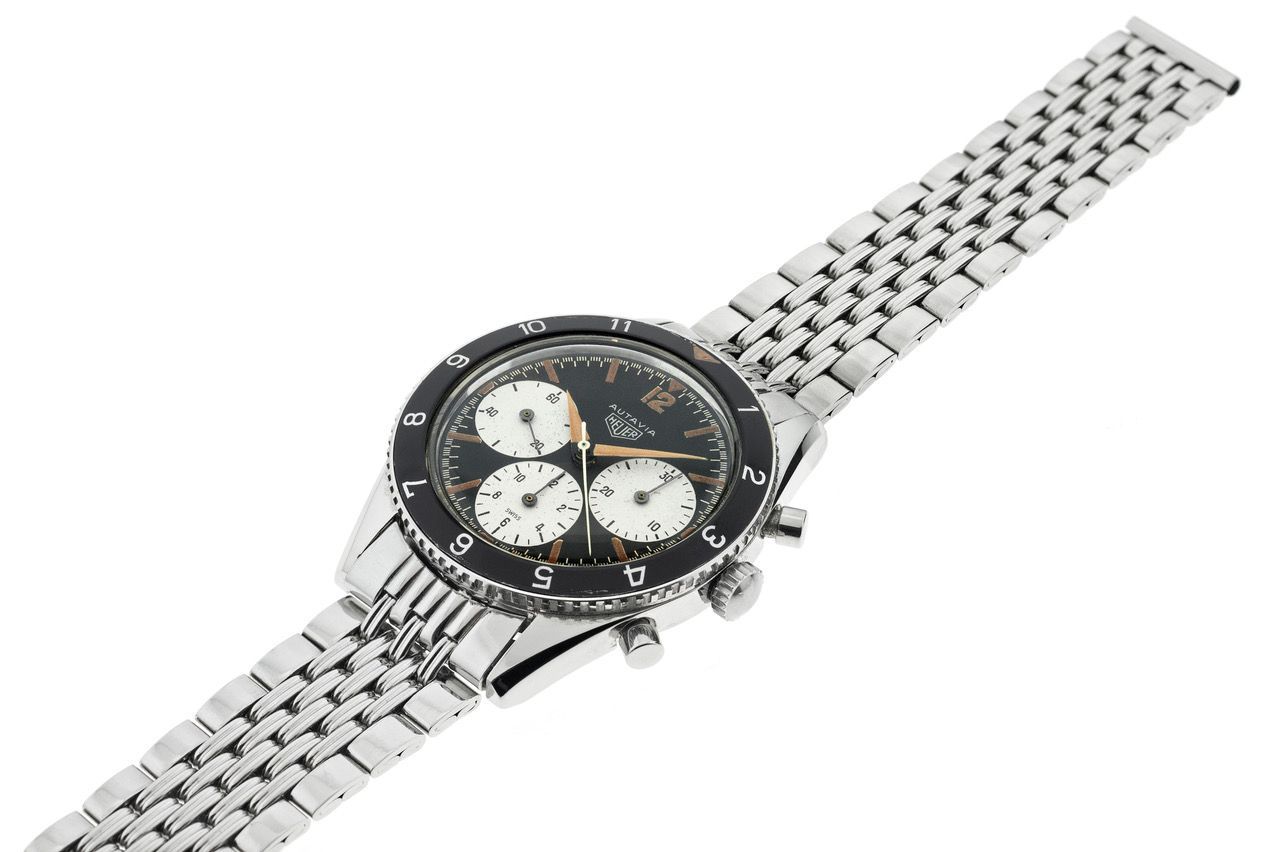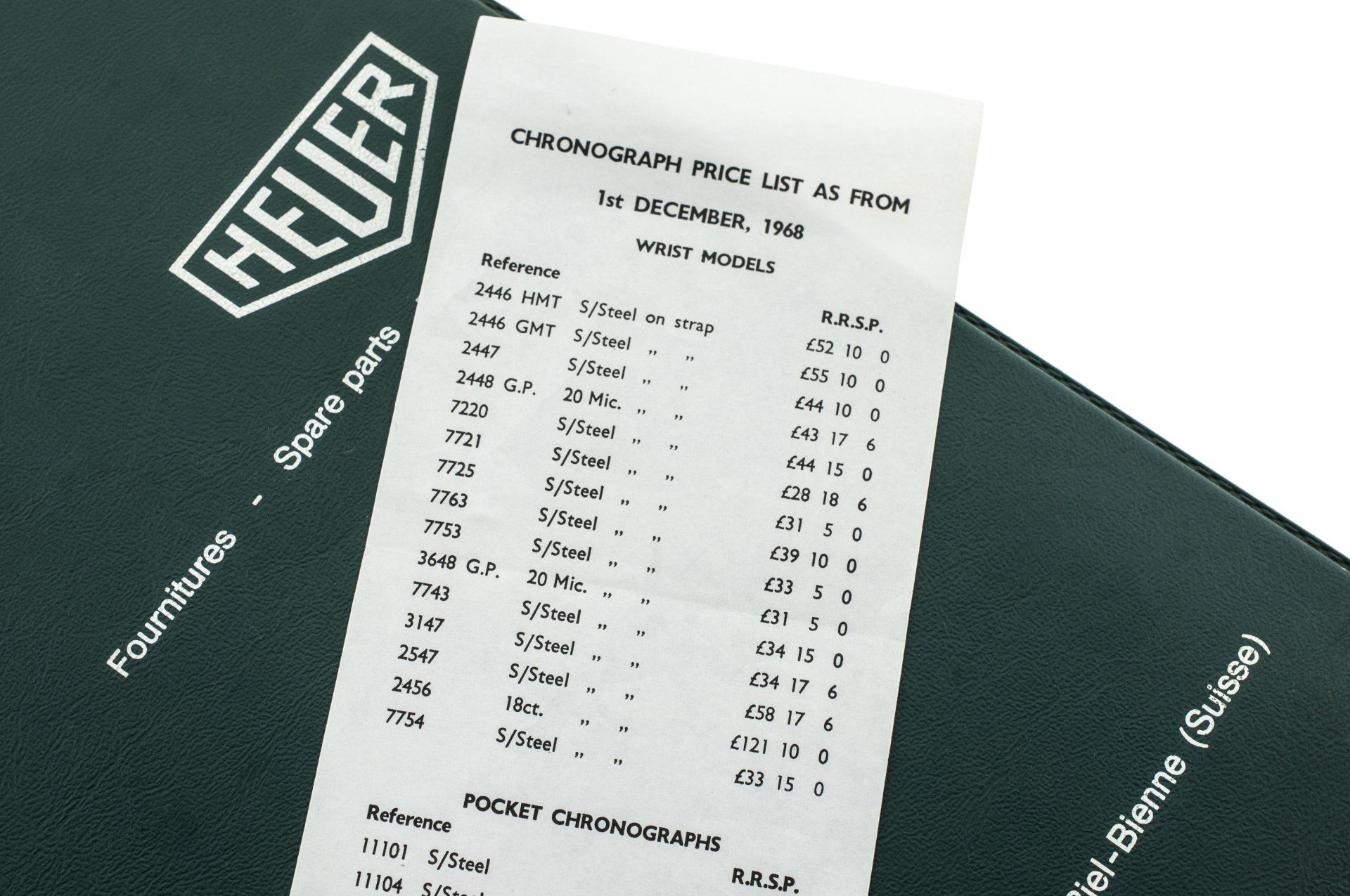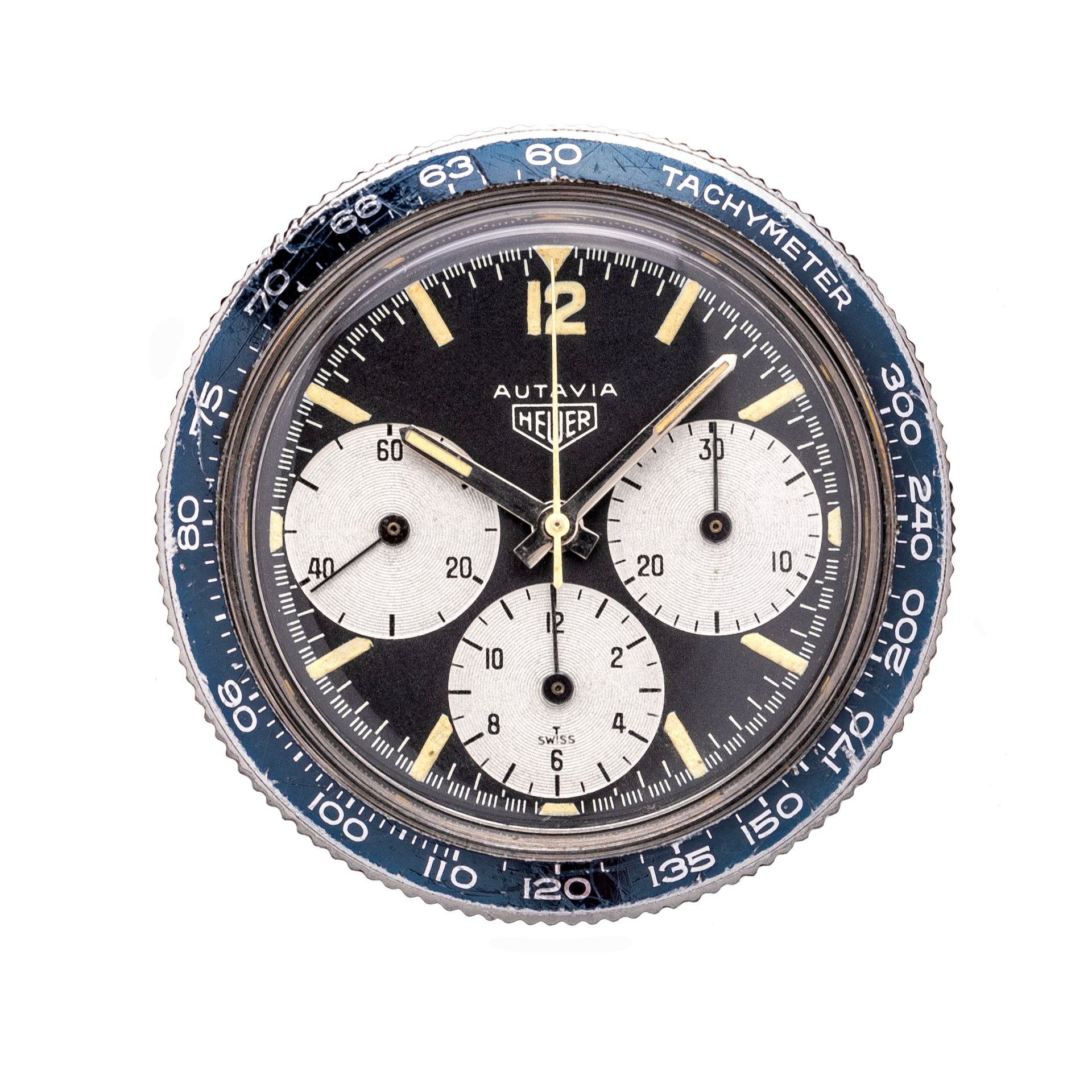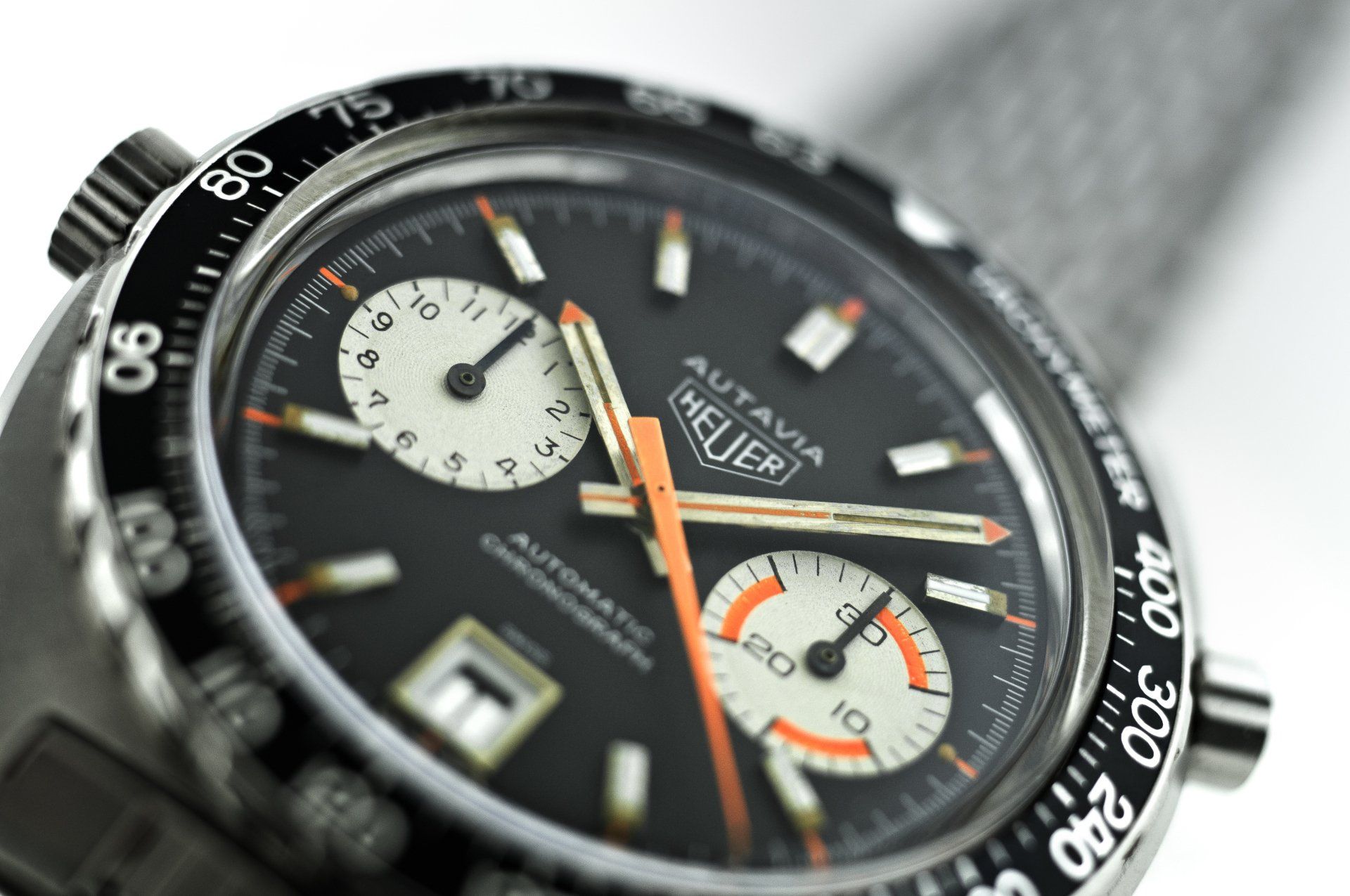The Autavia 1163GMT 2nd Execution
The 1970 Autavia 1163GMT 2nd execution - A watch for pilots.
In 1969 Heuer launched one the worlds first automatic chronographs (The argument about who was exactly first becomes a little boring, so I say "one of" for arguments sake) The very first batches were made up of the CHRONOMATIC signed Autavia, Carrera and Monacos, which are the holy grail for 1970s Heuer collecting. However shortly after this and still in 1969 Heuer launched the 1163 GMT series, which was specifically targeted at pilots and travellers, via the GMT hand and 24hr bezel.
Buy The Heuer Autavia Book
The first version of this series featured a 1-24 "Pepsi" bezel and used a modified Calibre 11 movement and the third version used a Calibre 14 and a different handset. However for this blog I concentrate on the most observed model the 2nd execution, introduced in 1970, which used mostly a Calibre 11 (although the end of the run did feature some Calibre 14 movements). The 2nd execution altered the hand set slightly from the 1st execution by usually having an orange chrono sweep hand, although a red hand was occasionally fitted and moved to a 2-24 bezel featuring even numbers only. The dial on the final two executions also featured paint that could fail under the right conditions which meant a certain percentage faded to a clear tropical chocolate brown finish (as can be seen in the photo above).
This GMT is often referred to as "Red Hands" because of the red sub register hands. These hands were a very unusual feature and although striking they did not make it onto any subsequent GMT version due to their legibility in certain lighting conditions. It is interesting to note that until recently aeroplane cockpit lights were normally always red, the reasons are multiple but our retinas are most sensitive and suffer more fatigue with the blue/green wavelength and red light allows for easier reading of instruments. The feedback was that the red hands were too hard to read within this environment and so this is why the red sub register hand experiment was a brief one! Although some red hands were changed by dealers upon request, we now know it is actually far rarer to find black sub register hands on this reference, most are found today still with their original red hands on.
Although the 1st and 3rd execution GMTs are rarer, the values for all three of the GMT executions are fairly close, with the 1st execution having a small premium. The normal range for the 1163GMT 2nd execution being £5500 - £13000 (head only) depending on condition. Interestingly there are only a handful of people who currently understand the rarity, and "pecking order" of the Heuer market, because much of the info in articles or on forums from ten years ago is now out of date, or just plain wrong. Even my Autavia book has been updated about seven times over the years, which equates to once for every year of release! In reality the Heuer collector market is still quite young, I would estimate a decade behind the more mature Rolex and Omega markets, so it will be interesting to see how things look in 2030...
If you are interested in finding out more about the Autavia GMTs or the Autavia, Carrera and Monaco models, click the link below to order one of the vintage Heuer collector reference editions or the Heuer Superstars "Holy Grail" book.
